
English Instructional Plan – Characterization Grade 4
- Subject:
- English
- Reading
- Material Type:
- Lesson Plan
- Author:
- VDOE Project Team
- Date Added:
- 04/14/2022

English Instructional Plan – Characterization Grade 4

English Instructional Plan – Characterization: Character Development Grade 5
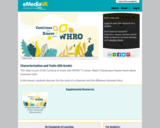
This video is part of the Continue to Know with WHRO TV series. Watch Chautauqua Hopson teach about character traits.
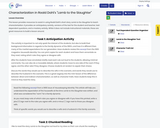
This lesson provides resources to assist in using Roald Dahl's short story Lamb to the Slaughter to teach characterization. It provides an anticipatory activity, versions of the text for the student and teacher, text-dependent questions, and a mastery activity. While it does not include instructional materials, these are great resources to build a lesson around.

English Instructional Plan Plot and Characterization -7
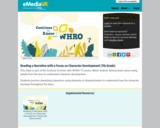
This video is part of the Continue to Know with WHRO TV series. Watch Andrew Sytsma teach about using details from the story to understand character development.
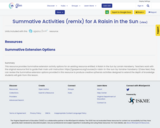
This resource provides Summative extension activity options for an existing resource entitled: A Raisin in the Sun by Lorrain Hansberry. Teachers work with the original resource first to guide their main unit-instruction: https://goopenva.org/courses/a-raisin-in-the-sun-by-lorraine-hansberry-2/view
Next, they can review the Summative extension options provided in this resource to produce creative sythensis activities designed to extend the depth of knowledge students will gain from this lesson.

This resource provides Summative extension activity options for an existing resource entitled: A Raisin in the Sun by Lorrain Hansberry. Teachers work with the original resource first to guide their main unit-instruction: https://goopenva.org/courses/a-raisin-in-the-sun-by-lorraine-hansberry-2/view
Next, they can review the Summative extension options provided in this resource to produce creative sythensis activities designed to extend the depth of knowledge students will gain from this lesson.
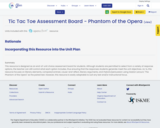
This resource is designed as an end-of-unit choice assessment board for students. Although students are permitted to select from a variety of response options, the teacher can still control what each option includes, thus ensuring that the responses students generate meet the unit objectives.
As-is, this resource focuses on literary elements, compare/contrast, cause-and-effect, literary arguments, and rhetoric/persuasion using Gaston Leroux's "The Phantom of the Opera" as the paired text. However, this resource is easily adaptable to suit any text and/or instructional focus.
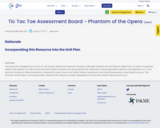
This resource is designed as an end-of-unit choice assessment board for students. Although students are permitted to select from a variety of response options, the teacher can still control what each option includes, thus ensuring that the responses students generate meet the unit objectives.
As-is, this resource focuses on literary elements, compare/contrast, cause-and-effect, literary arguments, and rhetoric/persuasion using Gaston Leroux's "The Phantom of the Opera" as the paired text. However, this resource is easily adaptable to suit any text and/or instructional focus.

This resource is designed as an end-of-unit choice assessment board for students. Although students are permitted to select from a variety of response options, the teacher can still control what each option includes, thus ensuring that the responses students generate meet the unit objectives.
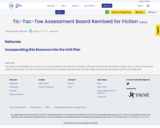
This resource is designed as an end-of-unit choice assessment board for students. Although students are permitted to select from a variety of response options, the teacher can still control what each option includes, thus ensuring that the responses students generate meet the unit objectives.
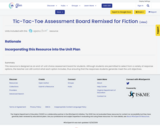
This resource is designed as an end-of-unit choice assessment board for students. Although students are permitted to select from a variety of response options, the teacher can still control what each option includes, thus ensuring that the responses students generate meet the unit objectives.
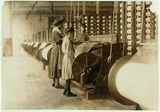
In this unit, students read the novel, Lyddie, by Katherin Patterson. Students will read a variety of fiction and nonfiction through the novel to make connections between characters and settings. Additionally, students will engage in character analysis to help them understand author's conventions. Finally, students will engage in vocabulary study to help them understand the connotations and denotations of words as well as enhance reading comprehension.
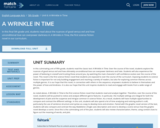
In this culminating unit of fifth grade, students read the classic text A Wrinkle in Time. Over the course of the novel, students explore the nuances of good versus evil and how ultimately unconditional love can overpower darkness and hate. Students will also experience the power of believing in oneself and trusting those around you, by watching the main character's self-confidence evolve over the course of the novel. This novel is the first science fiction novel that students are exposed to over the course of the curriculum. Exposing students to science fiction is important for not only building engagement and reaching a variety of readers, but also for exploring common themes across multiple genres. It is our hope that this novel, in connection with others in the sequence, empowers students to believe in themselves and the power of love and kindness. It is also our hope that this unit inspires students to read and engage with books from a wide range of genres.
As noted above, A Wrinkle in Time is the first science fiction novel that students read and analyze together. Therefore, over the course of the novel, students will be pushed to notice and analyze different genre features. In particular, the multiple settings are integral for both the development of plot and the suspense and intrigue common in science fiction. As a result, students will have multiple opportunities to compare and contrast the different settings. In this unit, students will also spend a lot of time analyzing and noticing author's craft, particularly the use of sentence structure and syntax as a way to develop tone and emotion. Paired with the graphic novel version of the text, students will also compare and contrast the way Madeleine L'Engle uses description and voice to develop a scene versus how the graphic novel develops a scene. Since this is the culminating unit of the year, students will also review characterization, theme, using context clues to figure out the meaning of words, and plot.